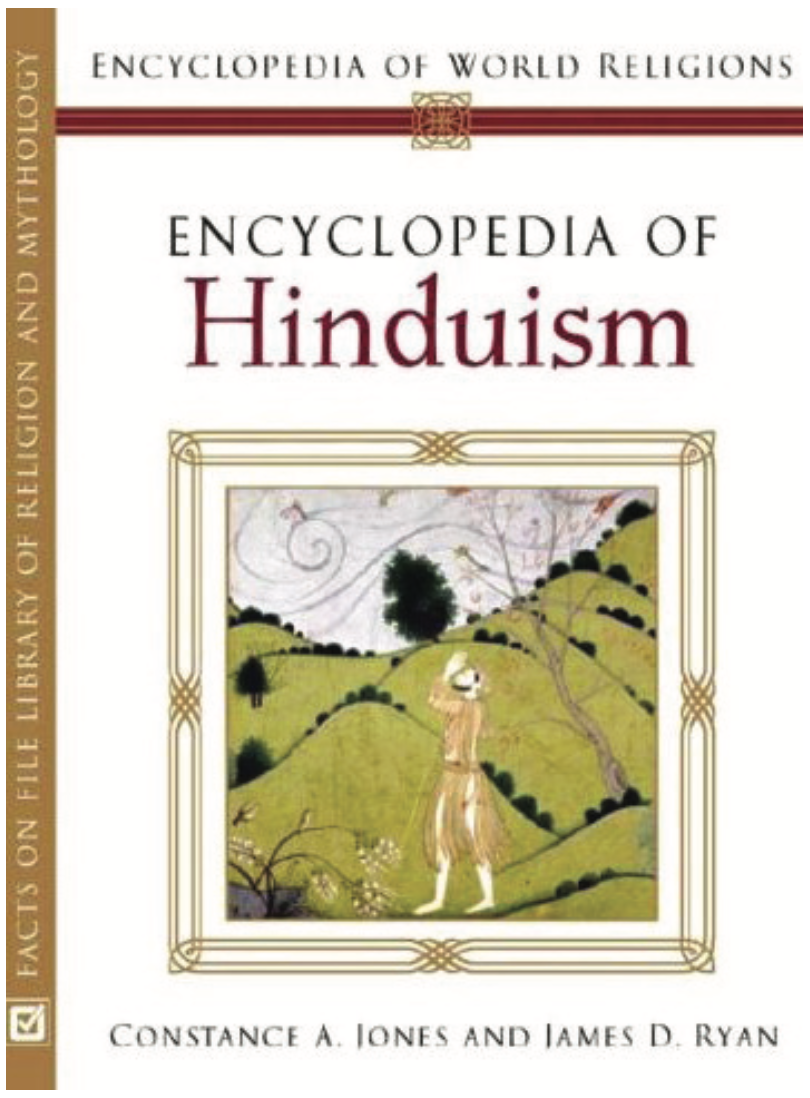
Back To Prabhupada, Issue 16, Summer 2007
Following the launch of BTP in October 2003, the IRM has been represented at a number of scholarly conferences and in publications including: the American Family Foundation (International Cultic Studies Association); Center for Studies on New Religions (CESNUR); American Academy of Religion; Society for Studies in Sects and New Religious Movements (Czech Republic); Columbia University Press; Continuum International Publishing; Martin-Luther University (Germany); Dingir magazine (Czech Republic).
This year, a major highlight has been a significant placement in the Encyclopedia of Hinduism. Encyclopedia of Hinduism is a volume from the new Encyclopedia of World Religions series. From an academic viewpoint, movements and personalities such as ISKCON and Srila Prabhupada, are automatically profiled under the heading of "Hinduism", and listed alphabetically from A-Z, the Encyclopedia of Hinduism "focuses on the most significant groups within this religion, noteworthy teachers and their contributions". BTP editor Krishnakant is listed in the Acknowledgements section at the front, while both ISKCON and the IRM's entries are listed next to each other in the body of the volume. Published by Facts on File, an award winning publisher for the school and library market, the Encyclopedia is edited by three of the world's leading scholars in the field: Dr. Constance A. Jones and Dr. James D. Ryan of the California Institute of Integral Studies; and Dr. Gordon Melton of the University of California, Santa Barbara and Director of the Institute for the Study of American Religion.
 |
Here are extracts from the Encyclopedia which will be of specific interest to ISKCON devotees:
Bhaktivedanta, Swami A.C. Prabhupada
p. 77
"Since his death, the movement has diminished in size and has fragmented. On July 9, 1977, Bhaktivedanta Swami appointed 11 of his senior assistants to act as officiating priests (ritviks) to initiate all future ISKCON members on his behalf. After his death at Brindavan on November 14 that year, the appointees claimed they were in fact chosen as successor gurus, causing confusion and controversy within the movement. ISKCON members believe that Bhaktivedanta Swami still exerts his spiritual influence on anyone who follows his teachings, and that he remains a highly empowered devotee of their God, Krishna. Effigies of Bhaktivedanta Swami are installed in all ISKCON temples.
Today, in addition to ISKCON, a reform movement, the International Society for Krishna Consciousness Revival Movement (IRM), carries on the teaching of Bhaktivedanta Swami."
International Society for Krishna Consciousness (ISKCON) (est. 1966)
p. 199
"ISKCON grew rapidly in the 1970s and 1980s but has seen a recent decline in membership, attributed by some observers to the controversies surrounding the leadership succession after Bhaktivedanta's death and the creation of subsequent reform movements.
See International Society for Krishna Consciousness Revival Movement (IRM)."
International Society for Krishna Consciousness Revival Movement (IRM)
(est. 2000), pp 199-200
"The ISKCON Revival Movement (IRM) was founded in 2000 as a pressure group to revive and reform ISKCON on the basis of an interpretation of the directives for succession given by Swami Prabhupada Bhaktivedanta (1896-1977), the founder of ISKCON.
According to IRM, the founder revealed […] on July 9, 1977 a signed directive appointing 11 of his senior managers to act as ritviks (officiating priests) to initiate new recruits into the ISKCON movement on his behalf. According to IRM, all future disciples within ISKCON were supposed to revere Bhaktivedanta Swami as their guru, not any successor. However, shortly after Bhaktivedanta Swami's demise on November 14, 1977, these ritviks ignored the directive; instead, they divided the world into 11 zones, each claiming to be the guru or spiritual successor in a different area. By early 1978 the 11 ritviks had begun to initiate disciples on their own behalf, acting as gurus for the movement.
Over time, a number of the gurus suffered lawsuits, suicide, and other problems. The movement was plunged into confusion and acrimony. By the mid-1980s the Governing Body Commission (GBC), which managed ISKCON, issued a new interpretation of Bhaktivedanta Swami's directive. What he had really wanted, it said, was for all disciples to become initiating gurus, not just the 11 ritviks. Today new gurus are added to the roster via a majority vote by the GBC at its annual meetings in Mayapur. Currently ISKCON gurus number around 80.
IRM contends that both the zonal guru system and its replacement multiple-guru system are unauthorized innovations. Citing GBC resolutions and management directives approved by Bhaktivedanta Swami, the IRM insists that ISKCON will continue to flounder as long as it fails to comply with the orders of Bhaktivedanta Swami Prabhupada.
The IRM has grown quickly in the few years of its existence […] It publishes an international magazine, Back to Prabhupada, and an electronic newsletter. They have also met with considerable opposition from those supporting the current multiple-guru system in ISKCON. The IRM's followers consist of both current and former ISKCON members, ISKCON Life Members, and members of the Hindu community at large. The IRM's ultimate goal is to rebuild an ISKCON movement operating just as Bhaktivedanta Swami intended, with him as the sole guru and authority.
Further reading: Swami A.C. Bhaktivedanta Prabhupada, Bhagavad-gita As It Is (New York: BBT, 1972); Krishnakant Desai, The Final Order (London: Printed privately, 1996)."
Subscribe for FREE to Back To Prabhupada Magazine - Click Here
Return to "Academia" Index
Return to IRM Homepage